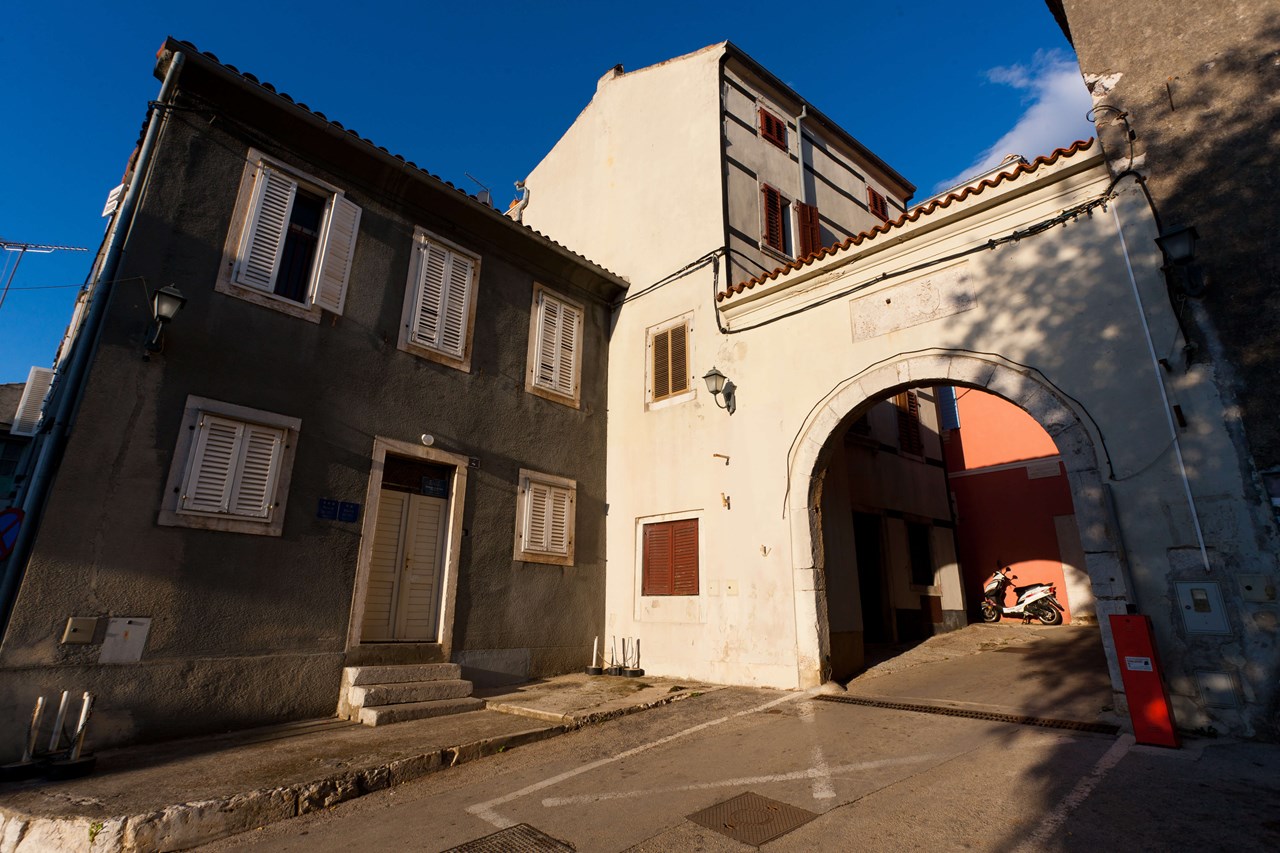Vrsar was developed within the walls in the Middle Ages. Up until the second half of the 17th century, the entire Vrsar was crammed inside the city walls, but due to a demographic expansion, it has been spreading outwards since. The best-preserved parts of the town walls are by the Great Gate and Small Gate, two Romanesque turrets that were a part of the fortification system, and the walls of the Vrsar castle, which were also a part of the fortification system in Vrsar and which are well-preserved and crenelated.
The best-preserved parts of the town walls are by the Great Gate and Small Gate, two Romanesque turrets and the walls of the Vrsar castle.

The Great Town Gate is located in the immediate vicinity of the Church of St Fosca. In the Middle Ages and the Modern Period, it was the central entrance into the town. The only constructed road in the Vrsar area stretched through it towards the foot of the Vrsar hill. The Great Gate belongs to the Vrsar fortification system. It was built in the Middle Ages, has Romanesque characteristics, and assumed today’s (final) form in the second half of the 18th century, when the Venetians placed their heraldic insignia above it. The town gate would close at 7 p.m. in winter and at 8 p.m. in summer, remaining closed until dawn. The wooden gate barring entry into the town has not been preserved.
The Small Town Gate in Vrsar is situated in the immediate vicinity of the Church of St Anthony of Padua. It was a secondary and mostly pedestrian entrance into Vrsar. The Small Gate is a part of the Vrsar fortification system. It was built in the Middle Ages, has Romanesque characteristics, and assumed today’s (final) form in the second half of the 18th century, when the Venetians placed their heraldic insignia above it. Unlike the Great Gate, this gate has a well-preserved wooden structure barring entry into the town, which is a rare case in Istria. The Small Town Gate in Vrsar, together with the passage connected to it within the walls, allow entry to the main town square (where the parish church was historically located), representing the quickest way out of town from the main square.